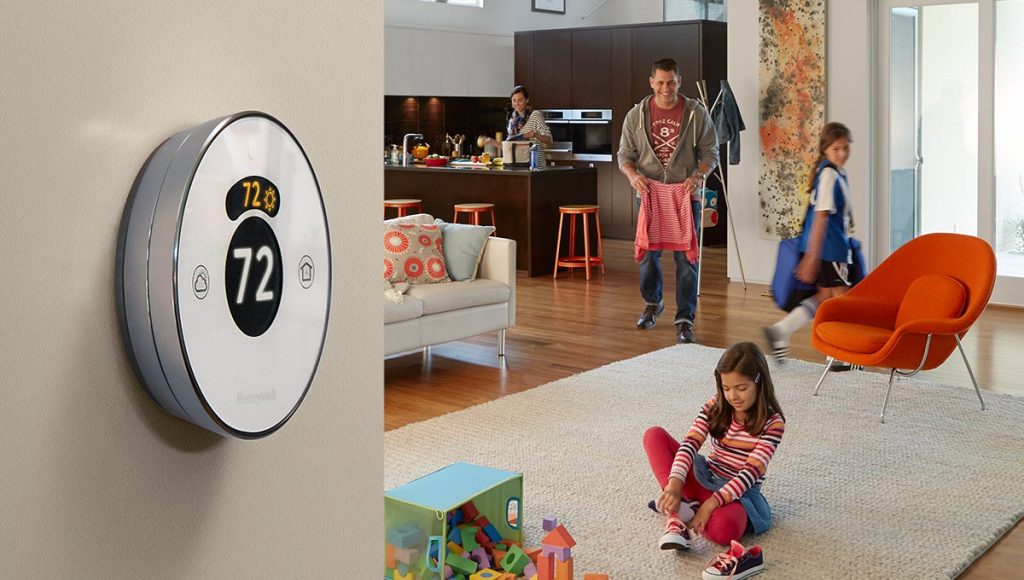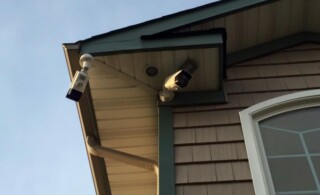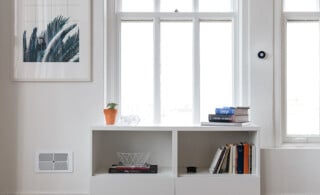Lennar, one of the country’s largest homebuilders, announced that it will begin building homes with whole-house wireless coverage, along with a slew of smart home products, from thermostats and cameras. The news added fuel to the “wired versus wireless” debate surrounding the smart home. The bigger question is this: with so many more connected homes coming to market, who will handle the ongoing service and installation needs? Here’s the essential information—for buyers, builders, and home service pros alike.
Wi-Fi as the Fourth Utility
About three quarters of all US households have high-speed internet service, according to the Pew Research Center. That growing ubiquity has many in the industry referring to Wi-Fi as “the fourth utility,” alongside water, gas, and electric.
For most homeowners, accessing the web means hooking up the modem provided by your internet service provider, be it AT&T, Comcast, or Verizon. The coverage is seldom flawless, though, with issues like dead zones and slow downloads hampering the experience for many homeowners. There are workarounds, for example calling the company and upgrading to a higher internet speed or installing additional Wi-Fi access points throughout the home. But that’s a hassle and expense most consumers would just as soon do without.
Lennar’s response is to build optimized Wi-Fi coverage into the home right at the time of construction. Think of it like the difference between an automated in-ground irrigation system versus setting up sprinklers by hand around the yard. Both options will get the job done, but the built-in approach is more effective and efficient.
“We know that people prefer to live wirelessly,” David Kaiserman, President of Lennar Ventures, the company’s R&D division, told me. “Being able to engineer that right into the design of the home the way we do plumbing or air conditioning just made sense.” The homes will be built in accordance with the Wi-Fi Home Design Certification, which was developed by the Wi-Fi Alliance, a trade group that represents IoT companies and creates standards around performance, security, and interoperability.
To earn the Wi-Fi certification, a home’s floorplan must be designed for optimal whole-home coverage, based on such factors as size, number of levels, and wall composition. “Network needs are different in every home,” says Randy Ryder, marketing and business development manager at the Wi-Fi Alliance. “With the use of a heat-mapping tool and other technologies, we’re able to determine where the access points need to be for optimal coverage.”
Lennar is also partnering with assorted manufacturers of smart home products, including an Amazon Echo Show digital assistant, Ring Doorbell, Baldwin Evolved Smart Lock, Honeywell Lyric Round Wi-Fi Thermostat 2.0, and Lutron controls for the lighting and shades. That spares homeowners the trouble of choosing and installing these smart devices.
Skeptics Remain
Though built-in wireless sounds like a slam dunk, some industry experts are taking a cautious view. “It’s great that the Wi-Fi Alliance is creating standards around wireless coverage,” says Mitchell Klein, executive director of the Z-Wave alliance, a consortium of IoT companies using the Z-Wave communication technology. “But if it means builders are going to decide they don’t need to run any wires anymore, that’s a disaster waiting to happen.”
Klein’s preference is for a hybrid model that combines wireless technology with hardwired components, such as an Ethernet connection for video streaming and other tasks that eat up bandwidth. Lennar says it’s doing just that, hardwiring certain spots within the home to ensure optimal coverage. Nevertheless, the wired versus wireless debate is sure to continue, especially if more builders embrace the Wi-Fi Home Design Certification.
Another certainty is that more US homes—new construction and existing alike—will feature smart home technology. That’s putting pressure on remodelers and other home service professionals to get up to speed with technology. “The locksmith who’s used to installing deadbolts and locksets now has to understand how the hardware connects with the rest of the smart home,” says Klein. “This is not something that’s been in their core competency.”
Fortunately, there are plenty of home service categories that are ready to step up. Earlier this year, HomeAdvisor conducted a smart home survey which found that consumers are turning to security/alarm companies, electricians, heating and cooling contractor, and handyman for the installation of smart thermostats, door locks, lighting, and more.
That’s a good sign, though with millions of new U.S. households entering the smart home market each year, the rate of consumer service demands is only going to increase. “We are definitely seeing a small tide of professionals from the various trades who are interested in learning the new technology,” says Klein. “But a lot more of them will need to get on board.”
Dan’s Bottom Line
Though much of the news around Lennar’s decision has focused on the “wired versus wireless” debate, the bigger development here is the integration of smart home technology at the time of construction. That’s creating ever more demand for home service professionals who can handle the ongoing service needs. As CE Pro magazine put it, “[Consumers will] be looking for a technology manager—a guiding hand to curate and manage their home technology experience. There is massive opportunity in this new market share.”
If Lennar’s bet on whole-house Wi-Fi pays off, other builders are sure to follow suit, increasing the demand—and, in turn, the opportunity—many times over.

 Surveillance Equipment
Surveillance Equipment  Empty-Nesters, Smart-Home Tech & Their Impact on Home Improvement Trends
Empty-Nesters, Smart-Home Tech & Their Impact on Home Improvement Trends  Top 5 Smart Home Trends for 2017
Top 5 Smart Home Trends for 2017  3 Smart Cooking Gadgets to Make Your Next Cookout a Success
3 Smart Cooking Gadgets to Make Your Next Cookout a Success  Get Smart: This Smart Vent CEO Wants Homeowners to Keep Their Cool
Get Smart: This Smart Vent CEO Wants Homeowners to Keep Their Cool 

Are You Familiar With This Topic? Share Your Experience.